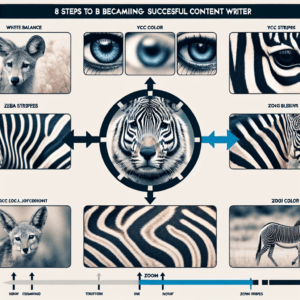Dynamic Typing In Python
One of the defining features of Python that contributes significantly to its flexibility and ease of use is dynamic typing. In contrast to statically typed languages, where variable types must be explicitly declared and remain fixed, Python allows variables to change type during the course of a program’s execution. This dynamic typing mechanism simplifies code development and enhances readability, making Python particularly appealing to beginners and experienced developers alike.
At the core of dynamic typing is the principle that variables in Python are not bound to a specific data type. Instead, they are references to objects, and the type is associated with the object itself rather than the variable name. For example, a variable initially assigned an integer value can later be reassigned to a string or a list without any need for type declarations. This flexibility allows developers to write more concise and adaptable code, especially in scenarios where the data type may not be known in advance or may change based on user input or other runtime conditions.
Moreover, dynamic typing contributes to Python’s rapid development cycle. Since there is no need to define variable types explicitly, developers can prototype and iterate more quickly. This is particularly advantageous in scripting, data analysis, and machine learning applications, where experimentation and frequent changes are common. The ability to modify variable types on the fly enables a more interactive and exploratory programming style, which is one of the reasons Python has become a dominant language in these fields.
However, while dynamic typing offers numerous benefits, it also introduces certain challenges. One of the primary concerns is the potential for runtime errors. Because type checking occurs at runtime rather than during compilation, type-related bugs may not be detected until the code is executed. This can lead to unexpected behavior if a variable is used in a context that assumes a specific type. For instance, attempting to perform arithmetic operations on a variable that unexpectedly holds a string instead of a number can result in a runtime exception. Therefore, developers must exercise caution and implement thorough testing to ensure type consistency throughout their programs.
To mitigate some of these risks, Python has introduced optional type hints starting with version 3.5. These type annotations allow developers to specify the expected data types of variables, function parameters, and return values. While the interpreter does not enforce these types at runtime, they can be used by static analysis tools such as mypy to detect potential type mismatches before execution. This hybrid approach combines the flexibility of dynamic typing with the safety benefits of static type checking, offering a balanced solution for larger or more complex codebases.
In conclusion, dynamic typing is a fundamental aspect of Python that enhances its usability and adaptability. It allows for greater freedom in variable assignment and supports a more fluid programming experience. While it does require careful handling to avoid runtime errors, the availability of optional type hints provides a valuable tool for maintaining code quality. As such, dynamic typing remains a key feature that contributes to Python’s widespread popularity and effectiveness across a broad range of applications.
Built-In Data Structures

Python, as a high-level programming language, is renowned for its simplicity and readability, but one of its most powerful aspects lies in its built-in data structures. These data structures are fundamental to writing efficient and effective Python code, as they provide the means to store, organize, and manipulate data in a variety of ways. Understanding these structures is essential for any developer aiming to harness the full potential of the language.
To begin with, Python offers several core built-in data structures, including lists, tuples, sets, and dictionaries. Each of these structures serves a specific purpose and is optimized for particular use cases. Lists, for instance, are ordered and mutable collections that can hold a variety of object types. They are highly versatile and support a wide range of operations, such as appending, removing, and slicing elements. This makes them ideal for tasks that require dynamic data storage and frequent modifications.
In contrast, tuples are also ordered collections but are immutable, meaning their contents cannot be changed after creation. This immutability makes tuples suitable for storing fixed collections of items, such as coordinates or configuration settings, where data integrity is crucial. Additionally, because they are immutable, tuples can be used as keys in dictionaries, unlike lists.
Moving on, sets are another important built-in data structure in Python. They are unordered collections of unique elements, which makes them particularly useful for membership testing and eliminating duplicate entries. Sets support mathematical operations such as union, intersection, and difference, which can be highly efficient when working with large datasets. Their performance benefits stem from the underlying implementation using hash tables, allowing for fast lookups and insertions.
Dictionaries, perhaps one of the most powerful data structures in Python, are collections of key-value pairs. They are unordered in versions prior to Python 3.7, but from Python 3.7 onward, they maintain insertion order. Dictionaries allow for rapid access to data via keys, making them ideal for scenarios where quick retrieval is necessary, such as caching or storing configuration parameters. The flexibility of keys and values being of any immutable type further enhances their utility.
Moreover, Python’s built-in data structures are tightly integrated with the language’s syntax and standard library, which provides a rich set of methods and functions to manipulate them. For example, list comprehensions offer a concise way to create and transform lists, while dictionary comprehensions provide similar functionality for dictionaries. These features not only improve code readability but also enhance performance by reducing the need for explicit loops.
In addition to their individual strengths, these data structures can be combined to form more complex data models. For instance, a list of dictionaries or a dictionary of sets can be used to represent structured data in a way that is both intuitive and efficient. This composability is a testament to Python’s design philosophy of simplicity and power.
In conclusion, Python’s built-in data structures are foundational tools that support a wide range of programming tasks. Their thoughtful design, combined with the language’s expressive syntax, enables developers to write clean, efficient, and maintainable code. Mastery of these structures is not only beneficial but essential for anyone looking to develop robust Python applications.
Interpreted And Cross-Platform Compatibility
Python is a high-level programming language that has gained widespread popularity due to its simplicity, readability, and versatility. Among its many features, two of the most significant are its interpreted nature and cross-platform compatibility. These characteristics contribute greatly to Python’s appeal among developers, making it a preferred choice for a wide range of applications, from web development to data science and artificial intelligence.
To begin with, Python is an interpreted language, which means that its code is executed line by line by an interpreter at runtime, rather than being compiled into machine code beforehand. This feature offers several advantages. For one, it allows for immediate feedback during development, enabling programmers to test and debug their code more efficiently. Errors can be identified and corrected quickly, which accelerates the development process and enhances productivity. Additionally, the interpreted nature of Python makes it easier for beginners to learn and experiment with, as they can see the results of their code in real time without the need for a separate compilation step.
Moreover, the interpreted execution model supports dynamic typing and interactive programming. Developers can write and execute code in an interactive shell or notebook environment, such as the Python REPL or Jupyter Notebook, which is particularly useful for data analysis and exploratory programming. This interactivity fosters a more intuitive and flexible coding experience, allowing for rapid prototyping and iterative development.
In addition to being interpreted, Python is also known for its cross-platform compatibility. This means that Python programs can run on various operating systems, including Windows, macOS, and Linux, without requiring significant modifications. The Python interpreter is available for all major platforms, and the language itself is designed to be portable. As a result, developers can write code on one system and deploy it on another with minimal effort, which is especially beneficial in collaborative and distributed development environments.
This cross-platform capability is further enhanced by Python’s extensive standard library and the availability of third-party packages that abstract away platform-specific details. For instance, modules such as os and sys provide interfaces to interact with the underlying operating system in a platform-independent manner. This allows developers to write code that behaves consistently across different environments, reducing the need for conditional logic based on the operating system.
Furthermore, Python’s compatibility with multiple platforms makes it an ideal choice for developing applications that need to be deployed across diverse systems. Whether building desktop applications, web services, or automation scripts, developers can rely on Python to deliver consistent performance and functionality. This versatility not only simplifies the development process but also reduces maintenance overhead, as a single codebase can serve multiple platforms.
In conclusion, Python’s interpreted nature and cross-platform compatibility are foundational features that contribute to its widespread adoption and effectiveness as a programming language. These characteristics enable rapid development, ease of use, and broad applicability, making Python a powerful tool for both novice programmers and experienced developers alike. As technology continues to evolve, these features ensure that Python remains a relevant and valuable language in the ever-changing landscape of software development.



